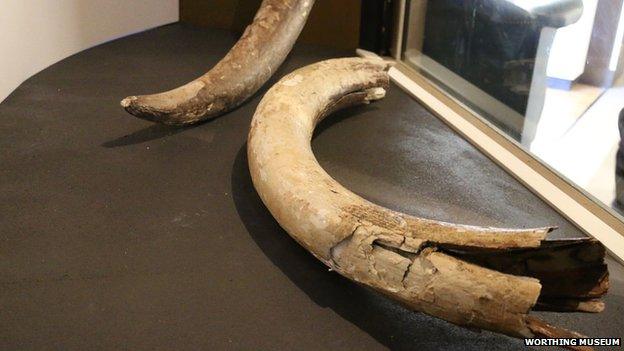'Lost' mammoth tusks go on display in Worthing
- Published

The woolly mammoth tusks are now on permanent display in Worthing
A pair of woolly mammoth tusks dredged up by fishermen 95 years ago have finally gone on display at a museum where they had been hidden away.
The tusks, found in a locked cupboard at Worthing Museum and Art Gallery, are believed to be from an animal which lived about 400,000 years ago.
They were identified by the British Museum but then put into storage at the West Sussex museum.
Curators found them earlier this year during conservation work.
'Very excited'
They had been put away as part of the museum's reserve collection.
The tusks were dredged up from the sea bed in fishing nets off the coast of West Worthing in November 1920 by local fishermen who sold them to the museum.
"We were very excited about the finds and after some research discovered the story of how they ended up in the museum," said senior curator Gerry Connolly.
"The tusks are of interest in themselves but the local story of them being dredged up from the sea bed is fascinating."

Woolly mammoths were roughly the size of a modern African elephant, the museum said
The museum said woolly mammoths, which were roughly the size of a modern African elephant, roamed the plains of northern Europe, including what are now the South Downs.
The English Channel, where the tusks were found, would have been vast grass plains 400,000 years ago.
Woolly mammoths were a food source for early humans who used their pelts for warmth.
The tusks are now on permanent display in the museum in Chapel Road.